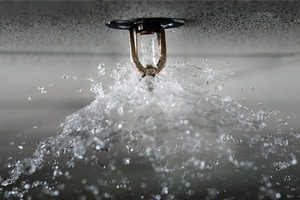
We have long written about the abuses suffered by elderly residents in nursing home facilities. Now, it seems that some other basic protection is not in place. Until this September, federal regulations did not mandate all nursing homes to be installed with automatic sprinkler systems, according to The New York Times’ NewOldAge blog. Since 2000, […]
 We have long written about the abuses suffered by elderly residents in nursing home facilities. Now, it seems that some other basic protection is not in place.
We have long written about the abuses suffered by elderly residents in nursing home facilities. Now, it seems that some other basic protection is not in place.
Until this September, federal regulations did not mandate all nursing homes to be installed with automatic sprinkler systems, according to The New York Times’ NewOldAge blog. Since 2000, automatic sprinklers are mandated in new, Medicare- and Medicaid-certified nursing homes and in new construction that is added to a facility. Older nursing homes did not have the same requirements until late 2008 and, even then, the facilities were given five years to comply. The deadline passed last month.
More than 1,100 older nursing homes remain out of compliance with either no sprinkler systems or partial systems, according to federal records cited by NewOldAge, a significant issue given that nursing home facility residents are very often ill, frail, or disabled. “We have residents who can’t get out of bed without two staff members to assist them,” said Robyn Grant, director of public policy and advocacy for the National Consumer Voice for Quality Long-Term Care, a nursing home advocacy group.
Grant also noted that many residents may suffer from cognitive limitations, which means they might not be clear about how to respond in the event of a fire, even when given directions. Said Grant, facilities may not be staffed with sufficient staff to ensure quick, safe evacuations. “Fires often happen at night when they’re particularly understaffed,” she added, according to NewOldAge.
For example, in 2003, at Connecticut’s Greenwood Health Center resident set her bed on fire in the middle of the night, which led to a blaze that killed16 people. That same year, a six-alarm fire, which also took place in the middle of the night, led to the death of 15 residents at Tennessee’s NHC Healthcare Center. Both fires, said Grant, “triggered national attention,” and led to sprinkler mandates in some states, NewOldAge reported.
It took five years for the federal regulations mandating automatic sprinklers; the compliance deadline was dated for five years later, despite that the National Fire Protection Association reported five fire-related deaths, on average, every year from 2006 to 2010 in nursing homes, group homes, or assisted living facilities, NewOldAge wrote.
National Consumer Voice seeks quicker action, including immediate fines and signs posted in facilities. According to Grant, if a nursing home was recently inspected, it could be 12-18 months before the facility is forced to comply and only 11 states have any type of regulation.
We have been following the mounting issue of elder neglect and abuse in nursing home facilities. With the senior population growing and living longer, neglect and abuse of nursing home residents is significant.
About 5.2 million Americans have been diagnosed with Alzheimer’s disease; by 2025, that figure could reach 7.1 million, according to the Alzheimer’s Association. Meanwhile, a 2001 Congressional report revealed that about one out of every three nursing homes in the United States were cited for at least one abuse violation over a two-year period. “In over 1,600 of these nursing homes, the abuse violations were serious enough to cause actual harm to residents or to place the residents in immediate jeopardy of death or serious injury,” the report indicated.


